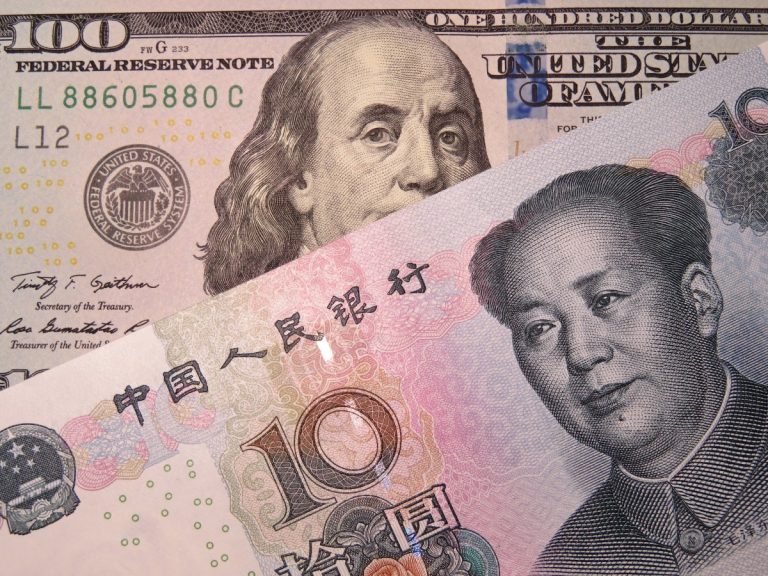As global financial markets face headwinds, China has taken decisive action to strengthen its currency, the yuan. In response to the dramatic decline in the country's A-list stocks, China's major state-owned banks intervened, tightening liquidity in the foreign exchange market abroad and selling US dollars at home. This proactive stance aims to prevent a rapid decline in the value of the yuan, indicating a clear policy move to stabilize the currency and counter negative sentiment in the stock market.
China's response to declining stocks
The benchmark Shanghai Composite Index recently saw its biggest single-day decline since April 2022, falling 2.7%. Gary Ng, chief economist for Asia-Pacific at Natixis, notes that the move by state-owned banks is a strategic effort to stabilize the yuan and address the prevailing pessimism surrounding stocks. Offshore funds sold nearly $1.6 billion of Chinese stocks early this year, driven by concerns about a potential slowdown in the world's second-largest economy.
In this difficult environment, offshore yuan futures rose tomorrow to a two-month high of 4.25 points. This indicates tightening liquidity conditions. This rise is due to government banks in the offshore market reducing lending to their peers, thus tightening the yuan's liquidity abroad and increasing the cost of short selling the currency. This multifaceted approach highlights China's commitment to supporting the yuan amid turbulent market conditions.
The yuan's external liquidity and the defense of the dollar
In this strategic maneuver, state-owned banks focused on the liquidity of the yuan abroad and aggressive selling of the dollar in the onshore spot foreign exchange market. The goal is to limit rapid declines in the value of the yuan, as spot selling of the dollar becomes particularly strong to defend the crucial level of 7.2 yuan per dollar. This defensive stance is essential in maintaining stability in the foreign exchange market and preventing excessive depreciation of the yuan.
China's state banks often act on behalf of the country's central bank in the foreign exchange market. While their primary role is to implement policies that ensure monetary stability, they may also trade on their own behalf or execute orders for clients. The anonymity of the sources providing this information highlights the sensitivity of the matter, as discussions about the state of the market are not usually conducted in public.


The Japanese yen rises as the Bank of Japan signals its commitment to a very cautious policy
The Japanese yen showed resilience, recovering 0.2% from its lows in late November, despite initial concerns about rising interest rates in the US. The focus is now on the next meeting of the Bank of Japan (BOJ) on Tuesday, with widespread expectations that the central bank will maintain its ultra-dovish policy, including negative interest rates and yield curve control mechanisms.
Analysts expect slight changes in the Bank of Japan's position, given the increasing uncertainty surrounding the Japanese economy after the earthquake that struck the country early in the year. Lower inflation and slower wage growth are likely to ease any pressure on the Bank of Japan to tighten policy.
Looking beyond the Bank of Japan meeting, market attention is turning to Tokyo's consumer inflation data for January, which is expected to provide insight into any inflationary effects from seismic events that occurred earlier in the year.
Meanwhile, there is a calm atmosphere in the broader Asian currencies, as they recover from a lackluster start to the year. After hitting a two-month low, the Australian dollar stabilized, while the South Korean won fell 0.2%, remaining close to its lowest level in almost three months. South Korea is awaiting fourth-quarter GDP data, scheduled for release on Thursday. The Singapore dollar found stability near two-month lows ahead of crucial inflation data later in the week. On the other hand, the Indian rupee showed little movement as local markets celebrated a special holiday.
The current landscape of the yuan
Despite these interventions, the local yuan last traded at 7.1963 to the dollar, reflecting a decline of about 1.4% year to date. Its overseas counterpart was marginally higher at 7.2047. Challenges in the stock market and broader economic landscape have put pressure on the yuan, necessitating these strategic moves by Chinese financial authorities.
China's recent efforts to support the yuan amid a turbulent stock market underscore the country's commitment to maintaining currency stability. Strategic interventions by state-owned banks, handling yuan liquidity abroad and defending against rapid declines in the onshore spot market, reflect a careful approach. These measures, taken in response to challenges to investor confidence and the global economic slowdown, underscore the importance of a flexible currency for the health of the Chinese economy. Continued efforts to maintain the yuan's strength will likely continue to shape China's economic policies in the coming months.

